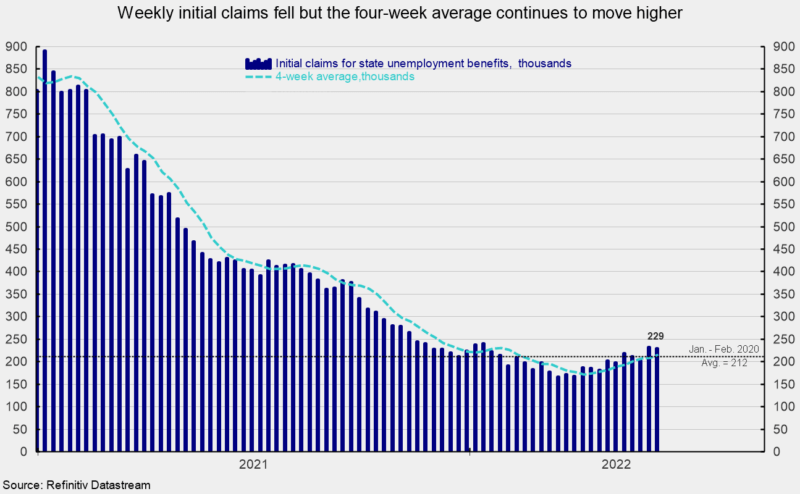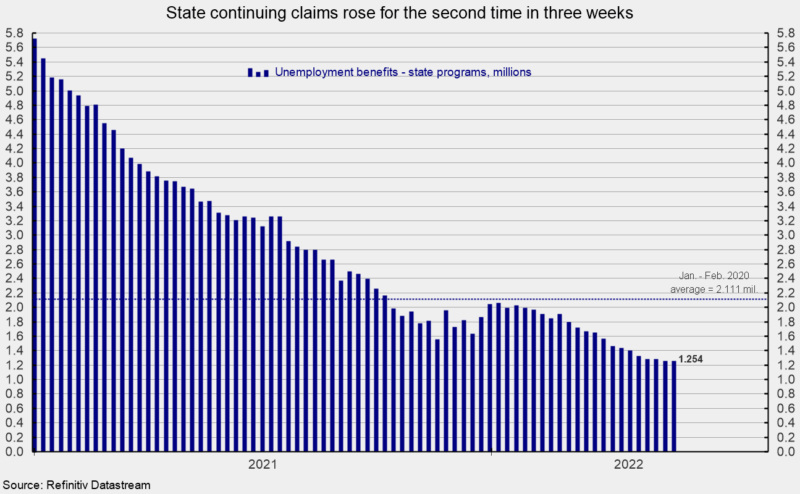Andrii Yalanskyi/iStock via Getty Images
By Robert Hughes
Refinitiv Datastream
Initial claims for regular state unemployment insurance fell 3,000 for the week ending June 11, coming in at 229,000. The previous week’s 232,000 was revised up from 229,000 and was the highest result since January 15 (see the first chart). By long-term historical comparison, initial claims remain very low.
However, the four-week average rose for the ninth time in the last ten weeks, coming in at 218,500, up 2,750 from the prior week and at the highest level since March 12th. Weekly initial claims data continue to suggest a very tight labor market, though the recent upward trend is a growing concern. The Russian invasion of Ukraine, periodic lockdowns in China, and an intensifying Fed tightening cycle are likely to impact the global economy over the coming months and represent risks to the economic outlook.
Refinitiv Datastream
The number of ongoing claims for state unemployment programs totaled 1.256 million for the week ending May 28, a rise of 1,639 from the prior week (see the second chart). State continuing claims have now risen in two of the last three weeks though the level remains very low (see the second chart).
The latest results for the combined Federal and state programs put the total number of people claiming benefits in all unemployment programs at 1.282 million for the week ended May 28, a decrease of 1,441 from the prior week. The latest result is the 16th week in a row below 2 million.
Initial claims remain at a very low level by historical comparison, but recent weeks have seen an upward trend become more apparent. Weekly initial claims for unemployment insurance are an AIER leading indicator and if the trend continues on an upward trajectory, it may be an early warning sign.
Still, the overall low level of claims combined with the record-high number of open jobs suggests the labor market remains very tight. The tight labor market remains one of the strongest parts of the economy, providing support for consumer spending. However, persistent price increases are weighing on consumer attitudes and may be starting to restrain consumer spending despite the strong labor market.
Labor shortages and turnover, along with materials shortages, logistical issues, and supply chain disruptions are likely to continue to hamper the growth in production across the economy and sustain upward pressure on prices. The outlook remains highly uncertain.
Editor’s Note: The summary bullets for this article were chosen by Seeking Alpha editors.


Be the first to comment